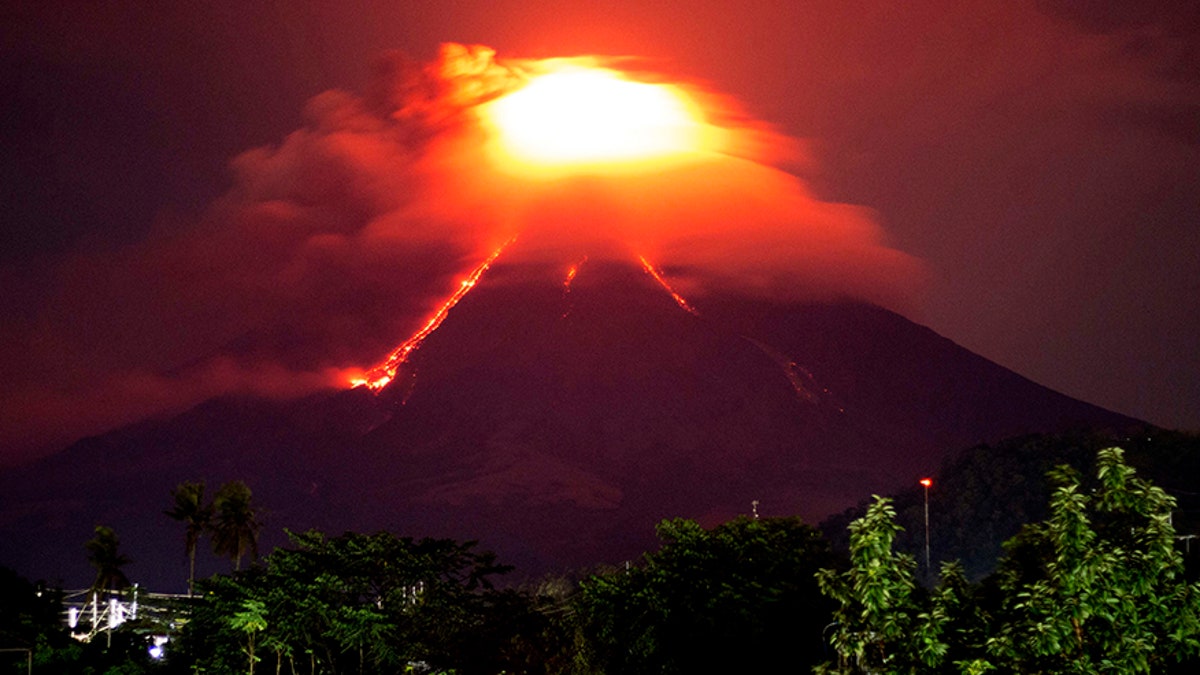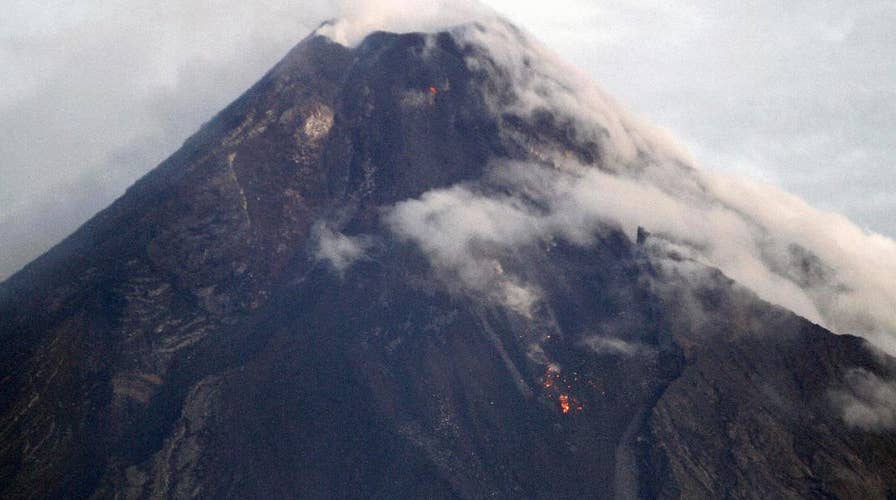Philippines Mayon volcano spews lava, causes mass evacuations
One of the world’s most active volcanoes, the Mayon volcano, began spewing lava and plumes of smoke. Residents of the Albay province evacuated while airlines warned pilots not to fly too close to the eruptions. Check out this video of the active volcano and impact on the region.
A bright red burst of lava that spurted like a fountain and flowed down the side of the Philippines’ most active volcano sent more villagers scrambling for safety Tuesday, as officials warned tourists from entering the danger zone.
The Philippine Institute of Volcanology and Seismology said the lava flowed as much as 1.2 miles from the cloud-shrouded crater of Mount Mayon, while ash fell on several villages in northeastern Albay province.
“This kind of eruption, it will take about weeks, so we have to sustain the operations in the evacuation centers,” Albay Governor Al Francis Bichara told the ANC news channel, according to Reuters. “We need to use the calamity funds.”
At least 34,000 people have been displaced by Mayon's eruption since the weekend from two cities and six towns. Many of the people took shelter in schools turned into evacuation centers, Jukes Nunez, an Albay provincial disaster response officer, told the Associated Press by telephone. Others took refuge in the homes of relatives.

Jan. 15, 2018: Lava cascades down the slopes of Mayon volcano. (AP)
The Institute has recorded at least nine tremors in the area, four of which accompanied lava fountains from the volcano, according to Reuters. The activity could mean a possible hazardous eruption is coming within a few days.
Officials strongly advised people not to venture into a danger zone about 3.7 to 4.3 miles around Mayon. Those being cautioned included residents who want to check their homes, farms and animals, and tourists seeking a closer view, the Associated Press reported.
"They say it's beauty juxtaposed with danger," Office of Civil Defense regional director Claudio Yucot said.
Albay officials declared a state of calamity in the province of more than a million people to allow more rapid disbursement of disaster funds, Nunez said.
"We have witnessed lava fountaining yesterday, that's why we have additional families who evacuated due to the threat," said Romina Marasigan, spokeswoman of the government's main disaster-response agency.

Jan. 16, 2018: The Mayon volcano spews a column of ash. (Reuters)
Renato Solidum, who heads the volcanology institute, said the flows cascading down the volcano were not generated by an explosion from the crater with superheated lava, molten rocks and steam, but were caused by lava fragments breaking off from the lava flow and crashing on the lower slopes.
Scientists have not yet detected enough volcanic earthquakes of the type that would prompt them to raise the alert level to four on a scale of five, which would indicate an explosive eruption may be imminent, Solidum said. Emergency response officials previously said they may have to undertake forced evacuations if the alert is raised to four.
Mayon is in coconut-growing Albay province, about 210 miles southeast of Manila. With its near-perfect cone, it is popular with climbers and tourists but has erupted about 50 times in the last 500 years, sometimes violently.
In 2013, an ash eruption killed five climbers who had ventured near the summit despite warnings. Mayon's first recorded eruption was in 1616 and the most destructive, in 1814, killed 1,200 people and buried the town of Cagsawa in volcanic mud.
The Philippines lies in the so-called "Ring of Fire," a line of seismic faults surrounding the Pacific Ocean where earthquakes and volcanic activity are common.
The Associated Press contributed to this report.

